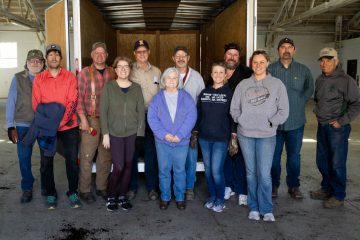DWIGHT, Ill. — The 1970s was a pivotal decade for agriculture, not only for the economic struggles that would follow, but also for concerted efforts to step-up soil conservation efforts.
Commodity prices spiked in 1973 after the Soviet Union signed a substantial three-year trade agreement to purchase U.S. grain. Grain exports doubled from 1972 to 1973.
In response to crop prices increasing, then-USDA Secretary Earl Butz encouraged farmers to “plant fencerow to fencerow.” It more or less discouraged conservation practices and the moldboard plow was part of the regular management.
Butz also released production controls, including the annual set-aside acres, to encourage more acres of cash crops.
Environmental groups took notice as reports of increased soil erosion spread. Environmentalists and allies in Congress questioned the effectiveness of existing soil conservation programs in light of the fencerow-to-fencerow trend.
As a result, the Soil and Water Resources Conservation Act was signed into law 45 years ago. The law provides the U.S. Department of Agriculture broad strategic assessment and planning authority for the conservation, protection and enhancement of soil, water and related natural resources.
It also called for USDA to “develop a national soil and water conservation program to give direction to USDA soil and water conservation activities.”
Since the fencerow-to-fencerow days, U.S. conservation tillage acres have increased from 44 million in 1973 to about 202 million acres in 2021, 104 million of which are no-till.
Local Efforts
Lee Bunting, a fifth-generation farmer from Dwight, joined the Livingston County Soil and Water Conservation District board a year after the resources conservation legislation. He has served the district for 44 years, now as county SWCD chairman.
Bunting noted the changes in conservation efforts in his farming career and the proactive role area producers have played in improving soil and water quality.
“Back in the 1970s when I got on the board, everybody was moldboard plowing their cornstalks and even plowing some soybean stubble,” Bunting said.
There weren’t a number of incentives four decades ago to implement conservation practices compared to today, and it was up to farmers to apply those practices on their own.
——
This story was written by Tom Doran of AgriNews and was first published on March 21, 2022. Read the full story via AgriNews by clicking HERE.


